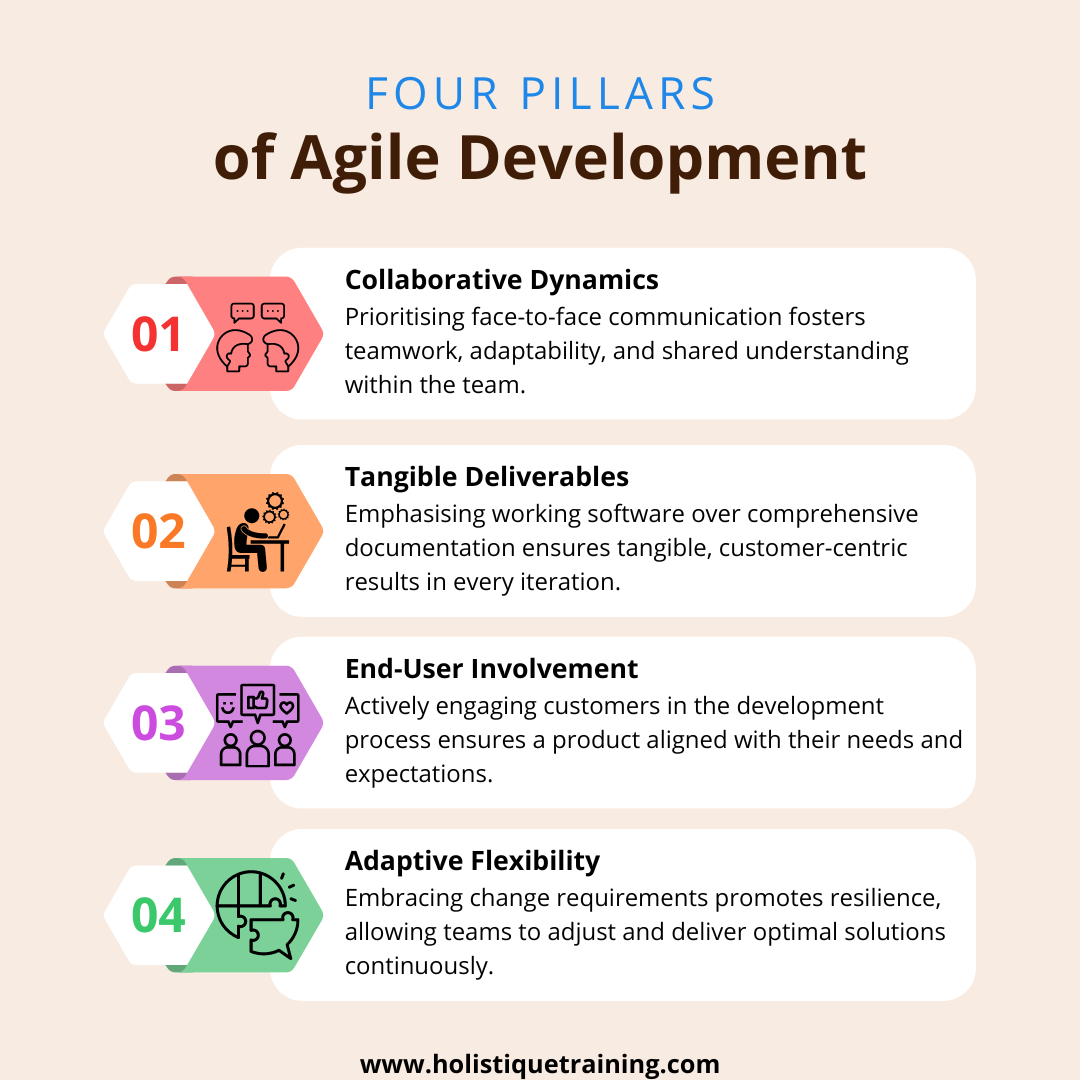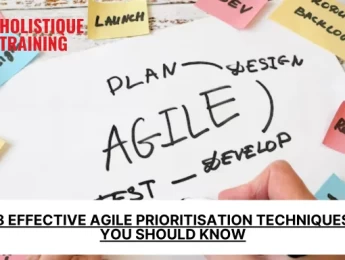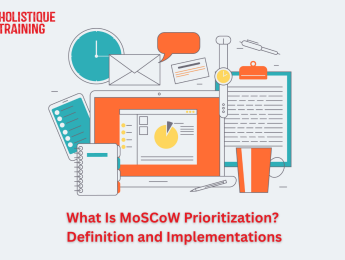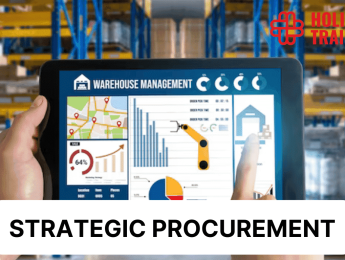- Table of Contents
- Introduction
- What Is Agile Prioritisation?
- Why Is Agile Prioritisation Important?
- Adaptability in a Dynamic Environment
- Incremental Value Delivery
- Customer Satisfaction as a North Star
- Risk Mitigation and Issue Resolution
- Efficient Resource Utilisation
- Alignment with Strategic Goals
- Agile Prioritisation Factors
- 1. Business Value
- 2. Dependencies
- 3. Risk Mitigation
- 4. Customer Feedback
- 5. Strategic Objectives
- 6. Resource Constraints
- 4 Levels of Prioritisation Techniques in Agile Development
- 1. Low Priority
- 2. Medium Priority
- 3. High Priority
- 4. Urgent Priority
- 8 Popular Agile Prioritisation Techniques
- 1. MoSCoW Method
- 2. Kano Model
- 3. Weighted Shortest Job First (WSJF)
- 4. Bubble Sort
- 5. Eisenhower Matrix
- 6. Planning Poker
- 7. Value vs. Effort Matrix
- 8. Impact-Effort Matrix
- What Prioritisation Model Best Suits Your Team?
- a) Team Dynamics
- b) Project Complexity
- c) Customer-Centric Approach
- d) Time Sensitivity
- e) Resource Constraints
- f) Organisational Goals
- g) Experimentation and Flexibility
- h) Feedback Mechanisms
- Statistics on Agile
- Conclusion
Introduction
Picture this: your development team is navigating the intricate waters of a project, and the demands keep changing with every tide. How do you ensure that your ship stays on course, reaching its destination with maximum efficiency and minimum turbulence? The answer lies in the art of Agile Prioritisation – a compass that guides teams through the dynamic landscape of software development.
What Is Agile Prioritisation?
At its core, Agile Prioritisation is the strategic process of determining the order in which tasks, features, or user stories are addressed within an Agile development framework. Unlike traditional project management methodologies, Agile embraces change, allowing teams to respond to evolving requirements with flexibility and adaptability. Prioritisation in the Agile context becomes a dynamic force, constantly reshaping the project's trajectory.

Why Is Agile Prioritisation Important?
In the world of software development, where change is not just inevitable but embraced, Agile Prioritisation emerges as the unsung hero that steers development efforts towards success. Its importance is multi-faceted, playing a pivotal role in shaping the outcomes of projects and ensuring that teams remain not only efficient but also responsive to the dynamic needs of stakeholders and the market.
Adaptability in a Dynamic Environment
Software development seldom follows a linear path. Requirements evolve, market conditions change, and unforeseen challenges arise. Agile Prioritisation equips teams with the ability to adapt swiftly. By prioritising tasks based on their immediate value, teams can pivot gracefully, responding to shifting circumstances without compromising the project's overarching goals.
Incremental Value Delivery
Agile methodologies advocate for delivering incremental value to stakeholders in short, iterative cycles. Prioritising high-value tasks ensures that each iteration contributes significantly to the project's success. This approach not only keeps stakeholders engaged and satisfied but also provides early and continuous returns on investment, reducing time-to-market and enhancing the overall project outcome.
Customer Satisfaction as a North Star
The heart of Agile lies in customer collaboration, and prioritisation becomes a compass that points directly towards customer satisfaction. By aligning development efforts with the most impactful and customer-centric tasks, Agile Prioritisation ensures that the end result resonates with the actual needs and desires of the end-users. This customer-centric approach fosters loyalty, positive feedback, and a higher likelihood of project success.
Risk Mitigation and Issue Resolution
Every project carries inherent risks, and Agile Prioritisation acts as a shield against potential pitfalls. By strategically addressing high-risk tasks early in the development process, teams can proactively mitigate challenges. Moreover, urgent priorities can be addressed promptly, preventing minor issues from snowballing into major roadblocks. This proactive stance enhances the project's resilience, allowing teams to navigate obstacles with greater ease.
Efficient Resource Utilisation
Resources, including time and manpower, are finite. Agile Prioritisation ensures that these resources are channelled into tasks that yield the maximum value. By focusing on high-priority items, teams optimise their efforts, preventing the dispersion of energy on lower-impact tasks. This efficient resource allocation not only improves productivity but also contributes to a more sustainable and motivated team.
Alignment with Strategic Goals
Every project is a journey towards a set of strategic goals. Agile Prioritisation serves as the compass that keeps the team on course. By consistently reassessing priorities in the context of overarching objectives, teams can ensure that the development effort remains aligned with the organisation's vision. This alignment is crucial for maintaining a cohesive and purpose-driven development strategy.
In essence, Agile Prioritisation is the lighthouse that guides development teams through the fog of uncertainty. It brings clarity to the complex decision-making process, ensuring that teams not only survive but thrive in the ever-changing seas of software development. By embracing the importance of Agile Prioritisation, teams can navigate the challenges with confidence, knowing that each prioritised task is a step closer to project success.
Agile Prioritisation Factors
Several factors influence Agile Prioritisation, each playing a crucial role in shaping the order of tasks. These factors include:
1. Business Value
At the forefront of Agile Prioritisation is the consideration of business value. Each task is evaluated based on its potential to deliver tangible benefits to the business or end-users. This involves gauging the impact of a task on revenue, customer satisfaction, or overall project success. Tasks with a higher business value are accorded priority, ensuring that the development effort aligns with the overarching goals of the organisation.
2. Dependencies
The web of dependencies in a project can either propel it forward or become entangling shackles. Agile Prioritisation carefully considers task dependencies to ensure that the team follows a logical sequence. By addressing tasks with interconnected relationships in a strategic order, teams avoid bottlenecks and maintain a smooth flow of development. This factor is crucial in preventing delays and promoting a cohesive and efficient workflow.
3. Risk Mitigation
The landscape of software development is dotted with potential risks – from technical challenges to external market forces. Agile Prioritisation becomes a risk-mitigation tool by prioritising tasks that address potential pitfalls early in the process. By confronting risks head-on, teams can reduce the likelihood of these challenges derailing the project later on. This proactive stance enhances the project's overall resilience and ensures a more secure journey to completion.
4. Customer Feedback
Agile methodologies value customer collaboration, and customer feedback is a golden nugget in the prioritisation process. Actively seeking and incorporating feedback from end-users provides valuable insights into their evolving needs and preferences. Agile Prioritisation, guided by this direct input, ensures that development efforts remain closely aligned with real-world requirements, enhancing the likelihood of delivering a product that genuinely resonates with the intended audience.
5. Strategic Objectives
Every project is a vessel sailing towards strategic objectives. Agile Prioritisation acts as the compass, continually aligning the development effort with these larger goals. Regularly revisiting and reassessing priorities in the context of strategic objectives ensures that the team's collective efforts are not only productive but purposeful. This factor contributes to a more cohesive and forward-moving development strategy.
6. Resource Constraints
The Agile ship sails on the winds of finite resources, and prioritisation is the rudder that steers it efficiently. Recognising resource constraints, be it time, manpower, or budget, Agile Prioritisation ensures that these resources are invested where they yield the maximum return. This factor not only optimises efficiency but also contributes to a sustainable and resilient development process.
In the grand symphony of Agile development, these factors harmonise to create a melody of strategic decision-making. Agile Prioritisation becomes a nuanced art, where the conductor carefully weighs each factor, ensuring that the resulting prioritisation is not just a sequence of tasks but a strategic composition that propels the project towards success. By understanding and embracing these factors, development teams can navigate the complexities of Agile Prioritisation with finesse, orchestrating a development journey that is not only agile but also harmonious.
4 Levels of Prioritisation Techniques in Agile Development
Agile Prioritisation operates on a multi-level framework, providing a nuanced approach to sorting through tasks and features. These levels act as a compass, guiding development teams through the complex seas of project management. Let's delve into them:
1. Low Priority
At the base of the prioritisation pyramid lie tasks and features categorised as "Low Priority." These are elements that, while potentially valuable, don't carry immediate significance for the current phase of the project. Teams earmark these for future iterations or releases, recognising their potential impact but acknowledging that other, more pressing matters require attention first. This level acts as a reservoir for ideas and functionalities that can be revisited when the time is right.
2. Medium Priority
As we ascend the prioritisation ladder, we encounter tasks deemed of "Medium Priority." These are significant elements that contribute substantially to the project's success but might not be immediately critical. They represent a balance between importance and urgency, often forming the backbone of the project. Development teams allocate resources to address medium-priority tasks, ensuring steady progress without sacrificing the core objectives of the project.
3. High Priority
Tasks labelled as "High Priority" occupy a place of prominence in the Agile development landscape. These are critical elements that directly impact the achievement of project goals and deliver substantial value. High-priority tasks are typically addressed in the current sprint or iteration, reflecting the urgency attached to their completion. By focusing on these high-impact elements, teams ensure that each development cycle significantly contributes to the overall success of the project.
4. Urgent Priority
At the pinnacle of Agile prioritisation are tasks marked as "Urgent Priority." These are the proverbial fires that demand immediate attention. Urgent priority tasks may arise unexpectedly due to emergent opportunities, critical issues, or sudden changes in requirements. Development teams must swiftly pivot to address these urgent priorities, preventing potential disruptions and maintaining the project's momentum. This level embodies the Agile principle of embracing change and responding adeptly to unforeseen challenges.
Navigating these four levels of prioritisation requires a keen understanding of the project's dynamics, strategic goals, and the ever-evolving needs of stakeholders. Agile development thrives on the ability to flexibly move between these levels, ensuring that the team remains responsive, adaptive, and focused on delivering the highest value at every turn.
As development teams ascend and descend this prioritisation pyramid, they craft a dynamic and responsive approach to project management. The key lies not just in categorising tasks but in recognising the fluidity of priorities and embracing change as an inherent part of the Agile development journey. In doing so, teams ensure that their ship sails not only efficiently but with purpose, navigating the waves of development with precision and resilience.
Table 1: Key Performance Indicators (KPIs) in Agile Prioritisation
KPI | Description | Impact on Development |
Customer Satisfaction | High-value tasks align with customer needs. | Enhances product acceptance and loyalty. |
Time-to-Market Efficiency | Swift response to priorities reduces time. | Accelerates delivery, meeting market demands. |
Resource Optimisation | Efficient allocation for high-value tasks. | Maximise productivity with available resources. |
Adaptability to Change | Agile response to evolving priorities. | Ensures resilience and successful course correction. |
Incremental Value Delivery | Continuous delivery of significant value. | Boosts stakeholder satisfaction and project momentum. |
8 Popular Agile Prioritisation Techniques
In the dynamic realm of Agile development, where adaptability and responsiveness reign supreme, prioritisation techniques serve as the compass guiding teams through the ever-changing landscape of tasks and features. Let's explore eight popular Agile prioritisation techniques, each offering a unique perspective on how to sequence and tackle the myriad challenges of software development.
1. MoSCoW Method
Derived from the acronym Must-haves, Should-haves, Could-haves, and Won't-haves, the MoSCoW method categorises tasks based on their criticality. "Must-haves" are non-negotiable essentials for project success, "Should-haves" are important but not critical, "Could-haves" represent desirable features, and "Won't-haves" are deliberately excluded. This technique facilitates clear distinctions, guiding teams to focus on the essentials first while providing a framework for flexible decision-making.
2. Kano Model
The Kano Model classifies features into basic needs, performance needs, and delighters. Basic needs are expected functionalities, performance needs enhance satisfaction linearly, and delighters create unexpected positive experiences. Agile teams leverage this model to prioritise features based on their potential to enhance customer satisfaction, ensuring that development efforts align with user expectations and preferences.
3. Weighted Shortest Job First (WSJF)
WSJF assigns a weight to each task, factoring in elements such as cost of delay and job size. By calculating a weighted score, teams can prioritise tasks based on their economic value. This technique ensures that efforts are directed towards tasks that provide the maximum business value relative to their size, fostering a focus on impactful and timely deliverables.
4. Bubble Sort
This technique involves a collaborative effort where team members collectively prioritise tasks by physically moving 'bubbles' representing tasks until a consensus is reached. Bubble Sort fosters team engagement and communication, ensuring that priorities are not dictated by a single perspective but reflect the collective wisdom of the team. It's a hands-on approach that encourages open dialogue and shared responsibility.
5. Eisenhower Matrix
Inspired by the famous quote, "What is important is seldom urgent, and what is urgent is seldom important," the Eisenhower Matrix classifies tasks into four quadrants: urgent-important, important-not urgent, urgent-not important, and not urgent-not important. This technique aids teams in categorising tasks based on their urgency and importance, facilitating a balanced approach to prioritisation and preventing the undue influence of seemingly urgent but less critical tasks.
6. Planning Poker
Agile teams use Planning Poker as a collaborative estimation technique. Team members assign effort estimates to tasks through a voting process, encouraging discussion and alignment on the perceived complexity of each task. This technique not only aids in prioritising tasks based on their estimated effort but also promotes team engagement and a shared understanding of project complexities.
7. Value vs. Effort Matrix
The Value vs. Effort Matrix involves plotting tasks on a matrix based on their value and effort required. Tasks that fall into the high-value, low-effort quadrant are prioritised, ensuring that the team focuses on tasks that yield significant value with manageable effort. This visual representation provides a quick and intuitive way to assess and prioritise tasks.
8. Impact-Effort Matrix
Similar to the Value vs. Effort Matrix, the Impact-Effort Matrix assesses tasks based on their potential impact and the effort required. This technique guides teams to prioritise tasks that offer the maximum value relative to the effort invested. It helps strike a balance between high-impact tasks and the resources available, ensuring an efficient allocation of effort.
Choosing the right prioritisation technique depends on various factors, including the project's nature, team dynamics, and organisational goals. Agile teams often experiment with different methods or combine aspects of multiple techniques to tailor an approach that best fits their unique context. By embracing these prioritisation techniques, teams equip themselves with a diverse toolkit to navigate the complexities of Agile development, ensuring that their efforts are not just Agile but also strategically focused and highly impactful.
What Prioritisation Model Best Suits Your Team?
In the vibrant world of Agile development, where flexibility and adaptability are the guiding principles, the choice of a prioritisation model becomes a critical decision for any team. The ideal model should seamlessly integrate with the team's workflow, align with project goals, and accommodate the unique dynamics of the development process. Here are some considerations to help you determine which prioritisation model best suits your team:
a) Team Dynamics
The dynamics and collaboration style of your team play a pivotal role in selecting the right prioritisation model. For teams that thrive on open communication and collaborative decision-making, techniques like Bubble Sort or Planning Poker may be particularly effective. These methods encourage active participation, ensuring that priorities are set through collective insights rather than relying on a single perspective.
b) Project Complexity
The complexity and scope of your project can influence the choice of prioritisation model. For large-scale projects with numerous dependencies, Weighted Shortest Job First (WSJF) may be beneficial. This method incorporates economic considerations and task size, providing a structured approach for prioritising tasks in a way that aligns with the overall project strategy.
c) Customer-Centric Approach
If your development process heavily relies on customer feedback and satisfaction, models like the Kano Model may be suitable. By categorising features based on basic needs, performance needs, and delighters, this model ensures that customer-centric considerations guide the prioritisation process. It helps in delivering a product that not only meets expectations but also exceeds them.
d) Time Sensitivity
In projects with time-sensitive components or where rapid response to change is crucial, the MoSCoW method can be effective. This model classifies tasks based on Must-haves, Should-haves, Could-haves, and Won't-haves, allowing teams to quickly identify and address critical tasks while providing a framework for future considerations.
e) Resource Constraints
Consider the resources available to your team, including time, manpower, and budget. Prioritisation models like the Value vs. Effort Matrix or Impact-Effort Matrix can help optimise resource allocation. These models allow teams to focus on high-value tasks that require manageable effort, ensuring that resources are utilised efficiently without compromising the project's success.
f) Organisational Goals
Aligning prioritisation with the broader organisational goals is paramount. If your organisation emphasises strategic alignment, regular reassessment of priorities in the context of strategic objectives is crucial. Methods like the Eisenhower Matrix, which classifies tasks based on urgency and importance, can assist in ensuring that the team's efforts are consistently directed towards high-impact and strategic goals.
g) Experimentation and Flexibility
Agile methodologies encourage experimentation and adaptability. Teams might find value in experimenting with different prioritisation techniques to identify what works best for them. Combining elements from various models or customising existing models can offer a flexible approach that caters to the specific needs and preferences of the team.
h) Feedback Mechanisms
Consider the feedback mechanisms embedded within your prioritisation process. If your team values continuous feedback and iterative improvement, techniques like Planning Poker, which involve collaborative estimation and discussion, may be beneficial. These methods not only aid in prioritisation but also promote a culture of constant improvement and learning.
In the end, the best prioritisation model for your team is one that aligns with your unique context and facilitates the efficient achievement of project goals. Agile development is not a one-size-fits-all endeavour, and teams should feel empowered to tailor their approach based on their specific needs and evolving project dynamics. By carefully considering team dynamics, project complexity, customer-centricity, time sensitivity, resource constraints, organisational goals, and feedback mechanisms, you can choose a prioritisation model that becomes an integral part of your team's success story. Embrace the spirit of Agile – be adaptive, be experimental, and let your prioritisation model evolve alongside your team's journey.
Statistics on Agile
Amidst the dynamic landscape of Agile adoption, businesses are drawn to its transformative potential. According toDigital.ai, software professionals embrace Agile for its proficiency in handling shifting priorities (64%), expediting software delivery (64%), and enhancing overall team productivity (47%). This resonates withOrganise Agile's insights, revealing the broader benefits of Agile, including bolstered flexibility and agility (83%), positive financial outcomes (68%), and the cultivation of an open and productive organisational culture (61%). Notably, the strategic significance of Agile is underscored by 91% of organisations, positioning it as a top priority for driving innovation and adaptability across industries, according toParabol.
Conclusion
In conclusion, Agile Prioritisation is the heartbeat of successful software development, beating in sync with the rhythm of change. As teams embark on the journey of building innovative solutions, the ability to prioritise with agility becomes a superpower, propelling them towards their destination with resilience and precision. Embrace the art, refine the technique, and watch your development efforts set sail towards unparalleled success in the ever-changing seas of software development.
























